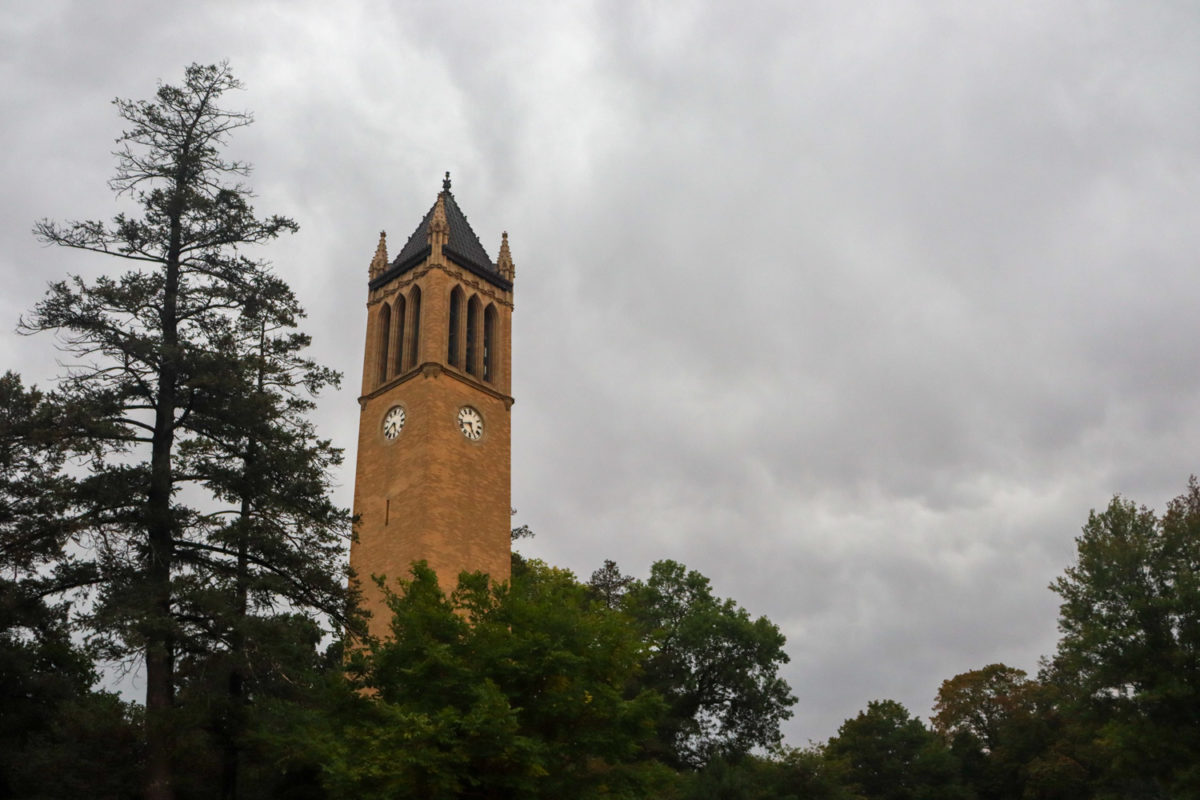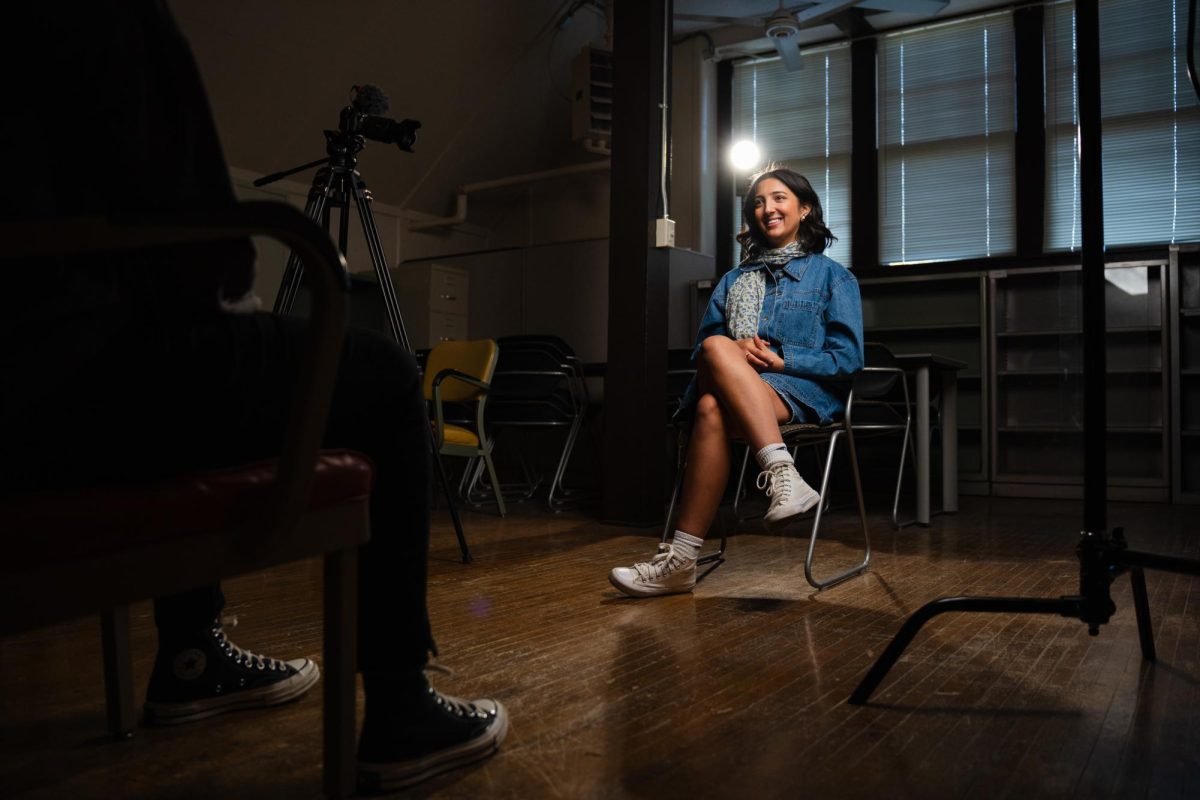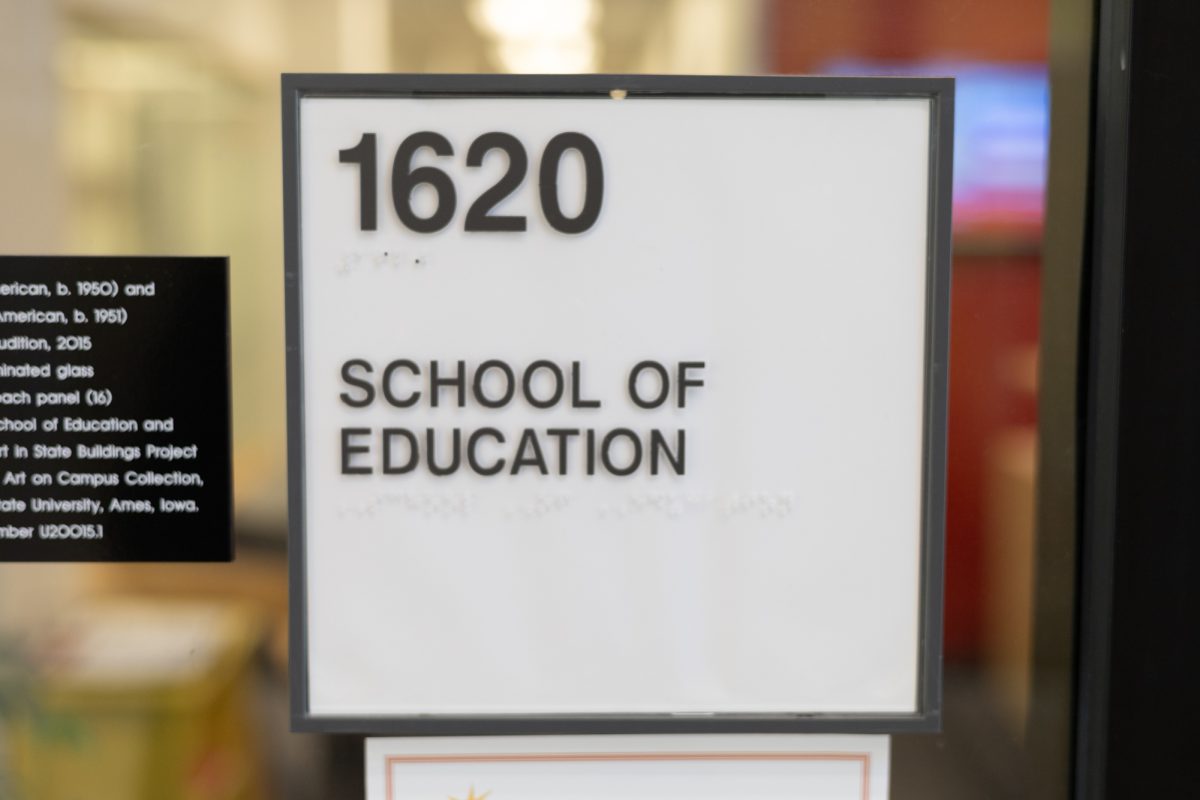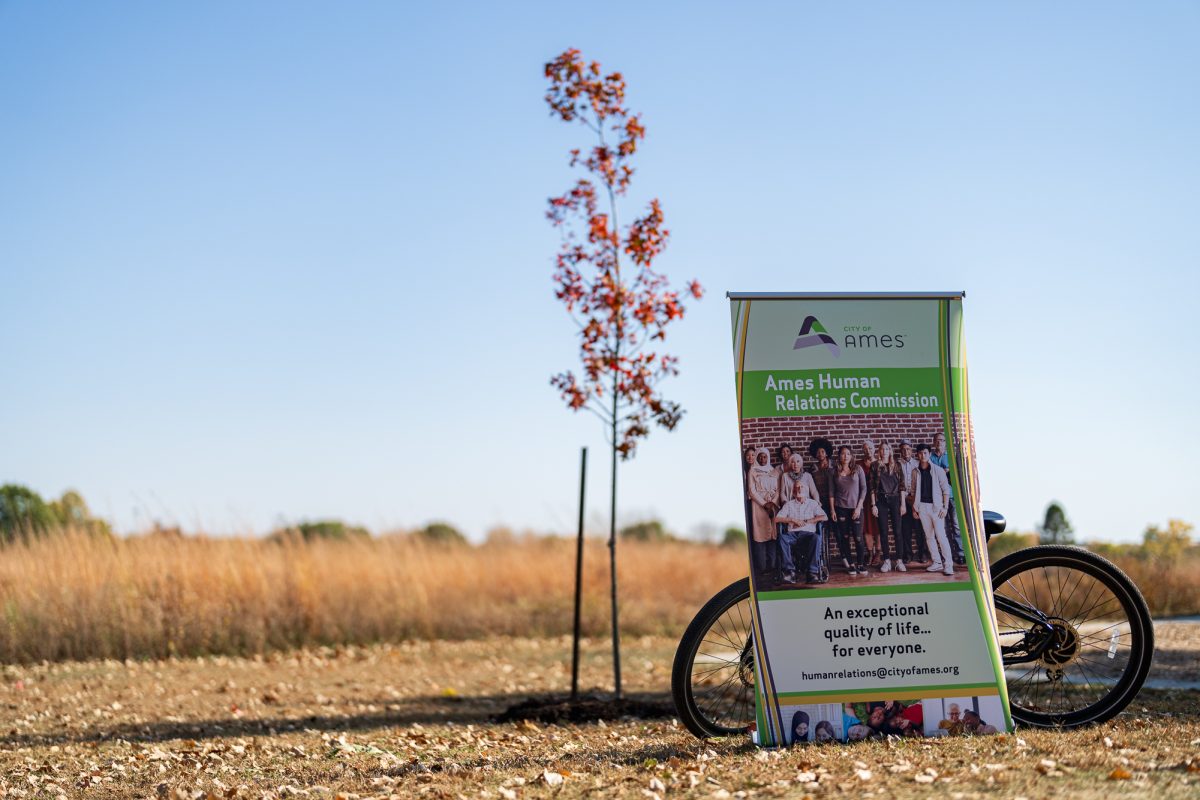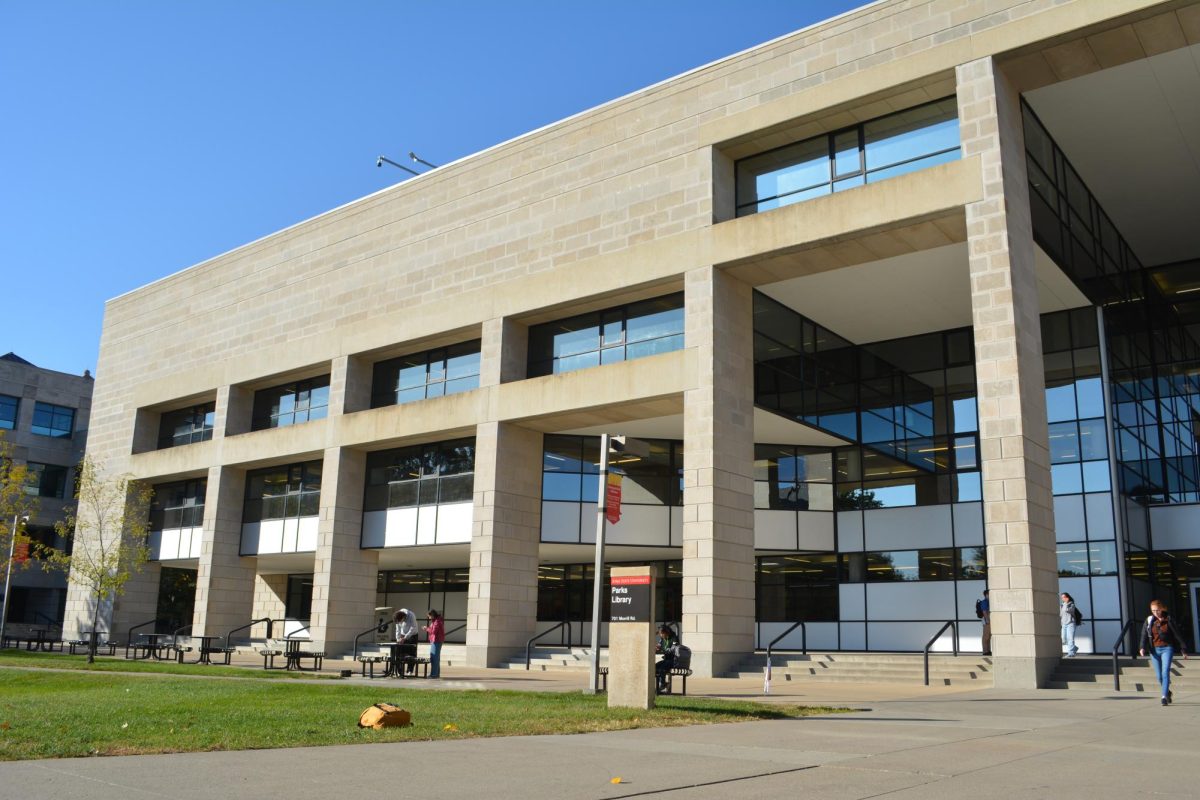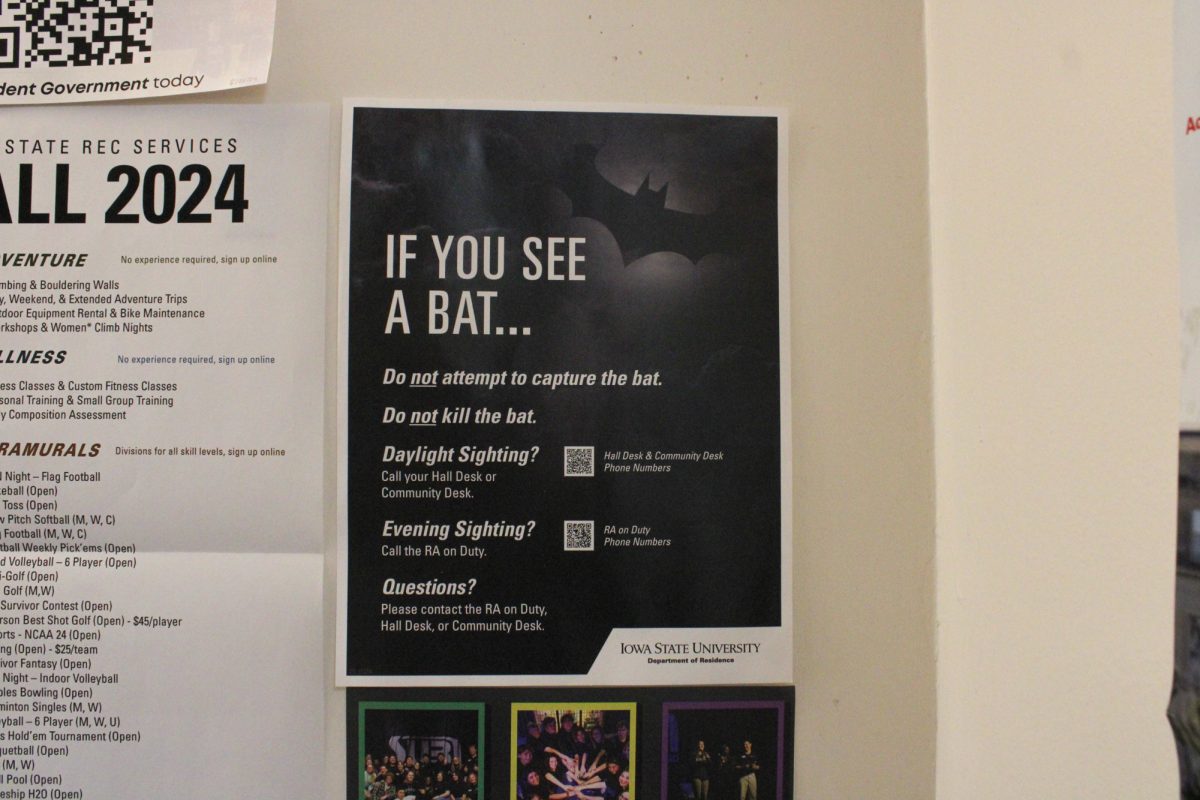As students roam the central campus of Iowa State University each day, they can hear the ringing of bells hailing from the tower which has become a symbol of the university itself: the Campanile.
The Campanile, or bell tower, was proposed by Edgar W. Stanton, a member of Iowa State University’s first graduating class of 1872. Stanton had become a figurehead of Iowa State, spending half of a century on campus under roles of faculty member, secretary of the board of trustees, dean of the junior college, vice president and, on four separate occasions, acting president of the university.
Stanton’s wife, Margaret McDonald Stanton, served as the university’s first dean of women for nearly 25 years. After her passing in 1895, her husband proposed the idea of constructing a tower in his wife’s name in a letter written to the board of trustees at Iowa State. With the aid of the university’s president at the time, William M. Beardshear, a location was chosen and appropriated by the state legislature for $7,500—or roughly over $200,000 at today’s rate.
The tower’s construction commenced in July 1897 and was completed in October of the following year.
The Campanile was designed by Des Moines-native architect George E. Hallett and was constructed from brick sourced in the Des Moines area.
Within the original tower were 10 tin bells fashioned from the Taylor Foundry in England, the foundation of what would soon become Iowa State’s own carillon.
A carillon, deriving from the Latin word quadrilionem (a quaternary), is a musical instrument made up of cup-shaped bells which have been tuned in harmony with one another. For an instrument to be recognized as a carillon, it must have between 23 and 77 bells.
After Edgar W. Stanton’s passing in 1920, his will provided for an addition to his wife’s grand memorial. At the request of Stanton’s second wife, Julia Wentch Stanton, and their children, the university installed 26 additional bells to the tower, completing what was at the time, Iowa’s largest carillon.
In 1956, 13 more bells were installed in the carillon. A final bell was enthroned to bring the carillon’s total to an astounding 50 bells, all hailing from the same Taylor Foundry in England.
Today, the Campanile and its carillon stand as a symbol of the university, embodying the tradition and heritage in which it was founded.
In 2015, a project began to create a 1/5 scale replica of the carillon’s bells. Each replica bell was constructed of the same tin material and features matching inscriptions of Stanton’s originals within the Campanile. The working replica is used as a way for carillonneurs-in-training to practice their skills before performing on the full-scale set.
The Student Carillonneur Leadership Council (SCLC) is a collective of dedicated Iowa State students who devote their time to the maintenance, transportation and ultimate success of the Campanile-Carillon Model.

The Student Carillonneur Leadership Council hosted a free tour for students Tuesday, showcasing both the Campanile and its scale model located in Iowa State’s Sukup Hall.
The tour began at 6:30 p.m. under the Campanile for a group of around 10 students, accompanied by the SCLC members and Iowa State’s own carillonneur, Tin-Shi Tam who holds a Doctor of Musical Arts degree in organ.
A decorated organist, Tam has performed in Asia, Australia, Europe, Canada and several locations throughout the United States. Tam has received numerous recognitions from the university, including the distinction of a university professor as well as the annual Impact Award. In addition to her accolades from Iowa State, Tam was presented with a proclamation from the mayor of Ames declaring April 14, 2014 “Tin-Shi Tam Day” throughout the city.
Following a brief introduction from each of the organization’s officers, students were invited to climb up and into the Campanile itself by means of an intensely compact spiral staircase located at the base of the structure.
The first room the group arrived at was originally built to hold the pendulum of the tower and its weights. These mechanisms were removed in 1992 when the tower was converted to electricity. The room also featured a set of two wooden chairs and a table, all of which were original to the Campanile during its construction, truly a piece of living history within.
The group then arrived at a deck overlooking the weight control, gears and gadgets that are used to strike the bells.
After a short climb later, the group reached the playing cabin. Unlike the dark, ominous and tightly compact interior of the rest of the tower, the playing room was carpeted, well-lit and ultimately did not carry the horror-movie-like aura of the rest of the tower. Centered in the middle of the room was the keyboard or instrument used to play the carillon. Students were given the opportunity to strike a no

te and play the bells of Iowa State themselves. Carolyn Riedel, teaching assistant and SCLC secretary of transportation then performed a piece from the “Three Preludes for Carillon” followed by the organization’s vice president and treasurer, Tanner Smith, playing a piece titled, “Siciliana.”
“Every time you practice on the real thing, the whole campus is your audience,” Riedel said.
While traditional compositions are typically heard from the Campanile, club officers remarked that more modern songs from artists such as Lady Gaga, Katy Perry and Metallica have been performed.
“Something about hearing Metallica on these bells sounds so cool,” Riedel said.
It was also noted that the hours of practice have been shortened to 5-8 p.m. following noise complaints from those on campus.
The group then descended from the tour and made the journey to Sukup Hall to take a look at the smaller-scale replica of the Campanile’s carillon. Once again, each student was given the chance to play some notes (and for those musically gifted enough, a song or two).

The SCLC officers proceeded to detail the importance of their organization and what they do as members. A key part of the organization focuses on the transport of the replica to various events across the country. These events include concerts, fairs, homecomings and even freshman orientation in Hilton Coliseum. In addition to campus functions and events throughout Iowa, the replica carillon has even made it to Chicago’s Radio City Music Hall for a performance.
Iowa State’s carillon replica is not only a great way for students and faculty to practice their compositions but serves as a way for the university to showcase an important piece of its history across the country.
“The goal is to spread it with everyone and show them, these are what the bells of Iowa State are,” said senior and SCLC president Rebekah Veldboom.


